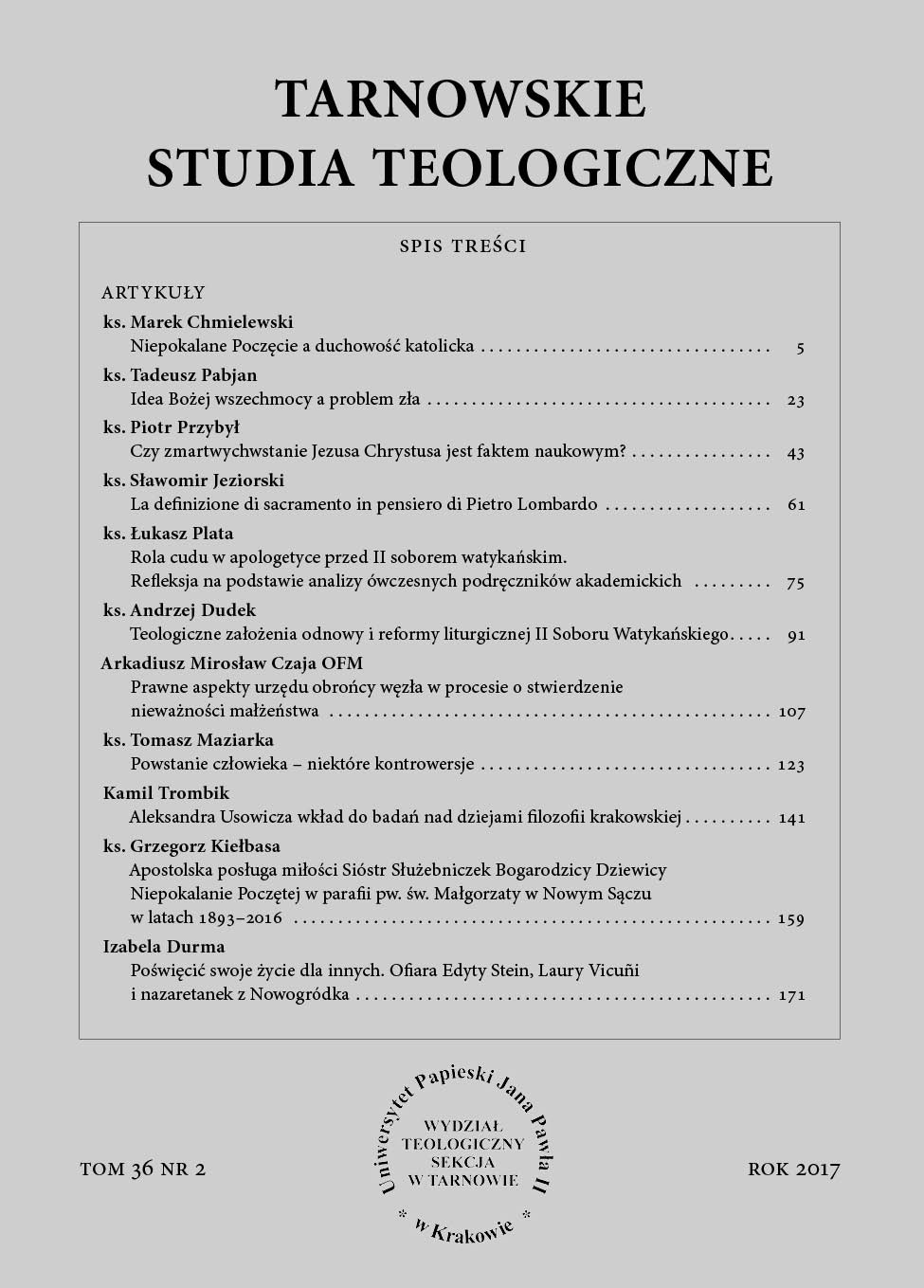The Origins of the Vulgate and the Correct Application of the Term
DOI:
https://doi.org/10.15633/tst.2321Keywords:
Bible, Vulgate, Council of TrentAbstract
The Vulgate is a Latin translation of the Bible, which has been considered to be of great importance for the Church and which is continuingly regarded as the superior text, especially in the liturgy. However, there are many misunderstandings relating to the Vulgate and as a consequence it happens that certain Latin translations of the Bible are refer to as the Vulgate while they are completely different texts. This article is an attempt to explain what were the origins of the Vulgate as an authentic text of the Bible after the Council of Trent and how it was preserved in the life and tradition of the Catholic Church.References
Bardski K., Neo-Wulgata a tłumaczenie św. Hieronima, w: Ioannes Paulus – in memoriam. Księga pamiątkowa Stowarzyszenia Biblistów Polskich ku czci Ojca Świętego Jana Pawła II, red. W. Chrostowski, Warszawa 2006, s. 15–26.
Bardski K., Wulgata, w: Encyklopedia katolicka, red. E. Giglewicz, t. 20, Lublin 2014, kol. 1027–1030.
Bechelet X.-M. Le, Bellarmin et la Bible sixto-clémentine. Étude et documents inédits, Paris 1911.
Bedouelle G., La Réforme catholique, w: Le temps des Réformes et la Bible, dir. G. Bedouelle, B. Roussel, Paris 1989, s. 327–367.
Bellarmino e la Controriforma. Atti del Simposio internazionale di studi. Sora, 15–18 ottobre 1986, a cura di R. De Maio, Sora 1990.
Brown D., Vir Trilinguis. A Study of Biblical Exegesis of Saint Jerome, Kampen 1993.
Claudel P., Umiłowanie Pisma Świętego, tłum. P. Lubicz, Warszawa 1958.
Dokumenty soborów powszechnych, tekst grecki, łaciński, arabski, ormiański, polski, t. 3: (1414–1445) Konstancja–Bazylea–Ferrara–Florencja–Rzym, układ i opracowanie A. Baron, H. Pietras, Kraków 2004.
Dokumenty soborów powszechnych, tekst łaciński, polski, t. 4/1: (1511–1870) Lateran V–
Trydent–Watykan I, układ i opracowanie A. Baron, H. Pietras, Kraków 2004.
Enchiridion Biblicum. Documenti della Chiesa sulla Sacra Scrittura, Bologna 1993.
Geronimo Seripando e la Chiesa del suo tempo [nel V centenario della nascita]. Atti del convegno di Salerno, 14–16 ottobre 1994, a cura di A. Cestaro, Roma 1997.
Ioannes Paulus II, Constitutio apostolica Scripturarum thesaurus (25.04.1979), „Acta Apostolicae Sedis” 71 (1979), s. 557–559.
Jedin H., Girolamo Seripando. Sein Leben und Denken im Geisteskampf des 16. Jahrhunderts, Würzburg 1937.
Królikowski J., Poszukiwania „optymalnego” tekstu Biblii w XIII wieku, „Tarnowskie Studia Teologiczne” 35 (2016) nr 1, s. 133–146.
Les canon des Écritures. Études historiques, exégétiques et systematiques, ed. J.-N. Aletti,
Ch. Theobald, Paris 1990.
Pius PP. XI, Constitutio apostolica Inter praecipuas (15.06.1934), „Acta Apostolicae Sedis” 26 (1934), s. 85–87.
Roussel B., Des protestants, w: Le temps des Réformes et la Bible, dir. G. Bedouelle, B. Roussel, Paris 1989, s. 309–326.
Ska J.-L., Il libro sigillato e il libro aperto, Bologna 2005.
Vaccari A., Esegesi ed esegeti al Concilio di Trento, „Biblica” 27 (1946) no. 4, s. 320–337.
Vosté G.-M., Vosté J.-M., La Volgata al Concilio di Trento, „Biblica” 27 (1946) no. 4, s. 301–319.
Downloads
Published
Issue
Section
License
Authors who publish with this journal agree to the following terms:
- Authors retain the copyright and full publishing rights without restrictions, and grant the journal right of first publication with the work simultaneously licensed under a Creative Commons Attribution 4.0 International License that allows others to share the work with an acknowledgement of the work's authorship and initial publication in this journal.
- Authors are able to enter into separate, additional contractual arrangements for the non-exclusive distribution of the journal's published version of the work (e.g., post it to an institutional repository or publish it in a book), with an acknowledgement of its initial publication in this journal.
- Authors are permitted and encouraged to post their work online (e.g., in institutional repositories or on their website) prior to and during the submission process, as it can lead to productive exchanges, as well as earlier and greater citation of published work (See The Effect of Open Access).

